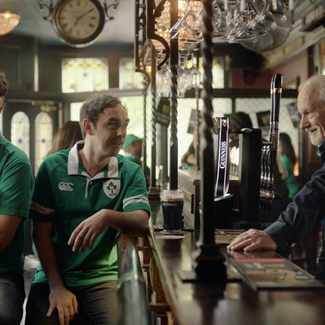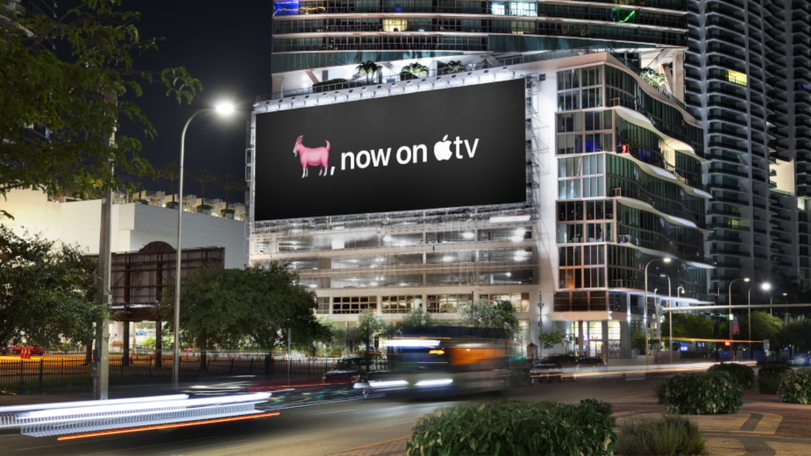
Sports Marketing
The unofficial sponsors’ guide to sports marketing
A look at how successful sports marketing opportunities are chosen and developed
13 June 2024
The men’s Euros kicks off today. The Olympics and Paralympics follow in July and August. And the rest of the year is packed with more great sport than you could throw a javelin at.
Some brands are lucky (and rich) enough to be official sponsors of these global juggernauts, which means access to talent and proximity to the drama. But for most brands with a connection to the sports involved, two questions always emerge:
Should we get involved?
How can we get involved, without falling foul of the strict regulations?
The first question is easy to answer: yes, you probably should.
These events draw huge live audiences, on and offline. They expand the relevance and reach of their sports, well beyond the die-hard fans. They put sport at the centre of culture and conversation for a few weeks and their impact can last for generations.
They change attitudes and behaviours, too, inspiring millions of people, young and old. To buy new football boots; to Google ‘velodrome near me’; to wonder if they are too old to become a curling gold medallist.
So, if you have a chance to connect your brand to these moments, you should.
The second question – how to get involved – is harder.
In order to offer meaningful value to the official sponsors, organisations like the International Olympic Committee (IOC) and the Union of European Football Associations (UEFA) have tightened the rules around what non-sponsors or non-partners can do.
Hilariously, the IOC has a phrase for Non-Olympic Partner creative work that passes their compliance test: ‘Generic Advertising’. Ouch.
As long as brands avoid the relevant IP of events, teams and athletes (e.g. the Olympic rings, or the Euros trophy), there are multiple ways for brands to stay within the rules, whilst delivering creativity that’s anything but generic.
Here are four strategies for unofficial sponsors to consider:
The ambush
This is one of the riskier strategies and will require a careful combing through the rules of each event, but when it works, it can steal the show.
One great example came from Mumm champagne’s #NextVictory campaign at the 2018 Winter Olympics. The brand worked with Usain Bolt, who challenged athletes to do his iconic ‘lightning bolt’ pose on the podium if they won.
If they posted a photo of the pose and tagged Bolt, he would reward them with a bottle of Mumm champagne, generating huge PR for the brand. Bolt is of course synonymous with the Olympics Games and athletics, but was not a participating athlete and was therefore exempt from the IOC’s ‘Rule 40’.
Behind the scenes
When brands have a direct connection to key players or athletes, it’s possible to tell human stories that go beyond the on-field action and the competitions themselves.
Ahead of the 2014 FIFA World Cup in Brazil, Beats by Dre created an emotive campaign showing how their ambassadors, from Neymar Jr to Luis Suarez, used music to shut out the pressure and prepare for the tournament.
By avoiding the cliches of World Cup ads, they managed to stand out from the sea of (official) sponsors and tell a more memorable story.
The fan perspective
Whilst there are endless rules and regulations around using athletes and players to promote a brand, fans have no such entanglements. And the fan perspective can often be more interesting and insightful.
We might not be able to relate to the pressure of taking a penalty kick in a World Cup final, but we can identify with the millions of other fans watching from behind their sofa cushions.
Guinness was not an official sponsor of the Rugby World Cup in 2023, so focused instead on the fan experience. Capturing the cautious optimism of Ireland fans with a campaign that encouraged them to “think it, dream it, just don’t jinx it”.
Use the language of culture
We live in a social age, where the language and visual world around sport is not easily captured in legal documents drawn up in grey office buildings.
Look for opportunities to talk about sport in ways that will resonate with your audience. Reward them for getting the joke or the reference.
When Lionel Messi moved to Inter Miami, Apple kept things smart and simple, with a pink goat representing the ‘Greatest Of All Time’ in Miami’s pink strip. They wouldn’t have been able to use his image or name, but they didn’t need to.
For the brands whose logos will adorn the imminent Euros, Olympics and Paralympics advertising hoardings, it will be exciting few months. But with the right strategy and creativity, the door is always open to the rest of us too.
Joe Smith is the strategy partner at AMV BBDO

